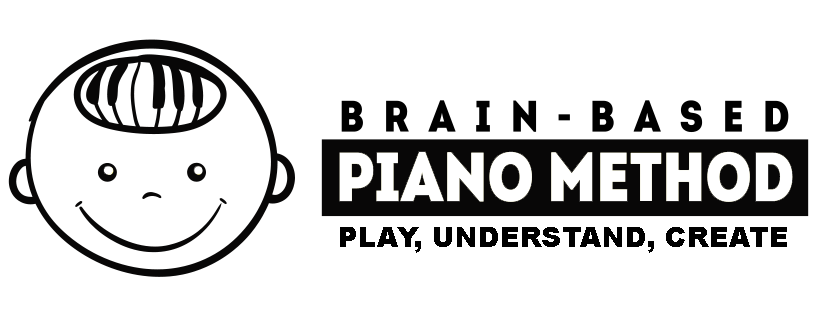Overview
The Brain-Based Piano Method was created with today’s children parents and teachers in mind.
Combining principles espoused by the leading music educators of the 20th century, Dalcroze, Orff, Kodály and Suzuki with insights passed on to us by the old masters of the 18th century (J. S. Bach, Leopold Mozart, the Neapolitan School of Partimento) and new insights from cognitive science, the Brain-Based Piano Method offers a fresh approach to music education adapted to the opportunities and challenges of our times.
Starting from children’s songs as vehicles for learning and experimentation, we have built a learning system for the 21st Century with the needs of today’s children, parents and teachers in mind. The system combines individual or small group lessons, an effective child-parent-teacher interaction and online videos into one successful learning experience.
Our motto is “Play, Understand, Create”.
Play: In a typical class, our students discover basic musical skills such as rhythm, musical ear, memory, musical notation through play, discovery and experimentation.
Understand: Children are introduced to fundamental elements of music in terms they comprehend, and help them build an understanding of music from the very beginning.
Create: Once students understand how music works, they start creating their own music.
Ages: Our program starts at the Immersion Level is addressed to children as young as 18 months old. Children are absorbing new knowledge at an incredibly fast pace. This method provides their growing minds with plenty of material for learning and experimentation.
Comprehensive: All aspects of musicianship are covered: rhythmic and melodic development, ear training and playing by ear, piano technique, reading and writing, composition and improvisation.
A Natural Learning Process: Following the natural process by which children learn their mother tongue (listen, imitate, speak, read and write), in the same way they learn music, first by listening, then by clapping, singing, then by playing on the piano. Reading and writing follows.
The Do-Re-Mi System: Children are introduced to notes through the Do-Re-Mi system of note names (the solfeggio system) for its many advantages: it allows students to make a direct connection between the sounds they hear, sing and the notes they play and provides a natural language for singing and ear training.
The A-B-C System: Starting with the Preparatory level, students also learn the English note naming system. Just like many of our students are bilingual, they are also fluent in the two note naming systems.
Reading and Writing Notes: We subscribe to the notion that experience comes before symbols. At the Initiation level, students sing, walk, clap and tap before worrying about note symbols. Both rhythms and notes are introduced first through manipulatives (the Rhythm Game, the Song Puzzle Game, and the Staff Game). Besides teaching musical notation, the games are also used to stimulate the students’ creativity.
Creativity: We paid particular attention to developing the children’s creativity. Students are encouraged to come up with their own rhythms, melodies, to modify and combine the songs they learn in different ways and to create their own arrangements.
Integration with Math and other Disciplines: Whenever the opportunity presents itself, we make the connection with knowledge that students have (or are about to acquire) from other disciplines. Most often, we connect the new musical concepts with mathematics (numbers and number operations, fractions, functions, graphs, etc.) Through their music study, students benefit from seeing the topic from an additional perspective
Organization: The method is organized on levels: Initiation, Preparatory, Level 1 and up. Each levels builds on the knowledge acquired in the previous. The knowledge is integrated in multiple ways. At each level, the Book presents the main material, and the Workbook contains more examples, reading and writing homework, and opportunities for experimentation.
Assessment: Systematic assessment is built into the learning process at every stage. The skills mastered are rewarded with a special badge or stamp.
Rewards: Our reward system celebrates every accomplishment. Children receive a reward for every new skill they learn and for every new song they can play right.
Clear Map: All activities that are rewarded provide a clear map. Children and parents clearly know what to do and what is expected from them to achieve the objectives of each learning stage.
Video Tutorials: We created video tutorials for most songs and activities to allow our students to review the songs, pieces and activities at home at their own pace. Parents and children alike can join in the fun and learning.



